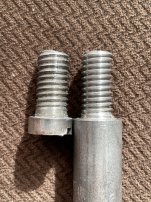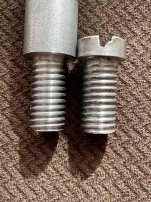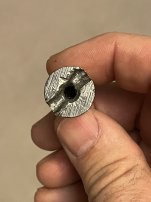Scottl
Diamond
- Joined
- Nov 3, 2013
- Location
- Eastern Massachusetts, USA
Since your small lathe would likely struggle to cut those threads, alignment could be a problem when using dies for hand threading. I therefore suggest that you make the screw blank longer and turn a pilot diameter to start the die. I would suggest you use the 1/2-12 die only.Use a traditional die handle and a vise to hold the workpiece and you should be fine as long as you use lots of cutting oil and remember to back off the thread periodically to clear chips.





